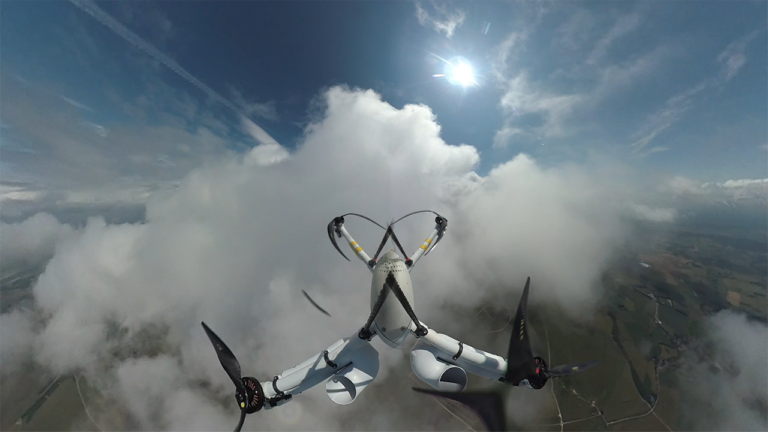A small weather drone has conducted its first mission to measure atmospheric processes over southern England as part of a summertime weather measurement campaign.
The video was taken on board a MetSprite uncrewed aircraft system conducting its first beyond-visual line-of-sight meteorological profile up through the boundary layer.
The drone is fully automated, harsh-weather resistant and fitted with integrated meteorological sensors. To date, it has been able to make pressure, temperature, humidity and 3D wind turbulence observations with unprecedented accuracy and resolution up to 2km above ground.
A team of researchers led by the National Centre for Atmospheric Science (NCAS), the University of Leeds and the Met Office are conducting the observational campaign to improve forecasts of extreme weather, such as thunderstorms.
The campaign, combining science projects called Wessex Convection Experiment (WesCon) and WOEST (WesCon – Observing the Evolving Structures of Turbulence), focuses on observing turbulent processes in the atmosphere and enhancing weather forecasters’ ability to make high-resolution predictions.
The novel observations, collected by drone flights as well as by radar and research aircraft, will lead to improved weather forecasts of storms, including when they are likely to start and how much rain will fall.
Drone operator Dr Ben Pickering, chief meteorological officer of Menapia, said, “We’re pushing into new territory by making beyond-visual-line-of-sight measurements at 2km, and intend to push to even higher altitudes as our confidence and our airspace permissions allow.
“At the moment, weather forecasting models rely on theoretical knowledge to simulate turbulence and storms in our atmosphere, and this could be a large source of potential errors in weather predictions.
“The data collected from these platforms could revolutionize the way we understand and predict thunderstorms in the UK. Long-term, we envision routine, automated drone observations to be ingested every day by weather forecast models,” he said.
Dr Ryan R Neely III, lead scientist of the WOEST project, added, “This is a first for the UK. We are now able to repeatedly profile the full extent of the boundary layer with high-resolution sensors. Not only is this important for our current project but it is also a big technological step forward for our entire field.”
For more on climate measurement, click here.



